Create arrays to fill the board with this fun multiplication game.
Array Multiplication Game
Arrays are a perfect way to model multiplication facts! Making them fun is what this teaching resource is all about!
This multiplication game is an ideal activity to add to your maths rotations for years two and three. Students spin two custom spinners that result in multiplication facts of 2, 3, 5 or 10. They will then create an array on their game board that matches the numbers. On a recording sheet, students will write matching number sentences and the product of each.
The aim is to be the person to fit as many arrays on their board as possible. If a student is unable to fit an array on their board, they get a strike and miss a turn. Three strikes and they are out.
Through this activity, students will show they can represent multiplication as arrays and recall multiplication facts of two, three, five and ten.
Tips for Differentiation + Scaffolding
A team of dedicated, experienced educators created this resource to support your maths lessons.
If you have a mixture of above and below-level learners, check out these suggestions for keeping students on track with the concepts:
🆘 Support Struggling Students
Assist students who need help understanding the concepts by reminding them that the first number in a multiplication number sentence represents the number of rows, and the second number represents the number of columns. A handy tip to remember is that ‘rows’ has fewer letters than ‘columns’.
➕ Challenge Fast Finishers
For students who finish quickly, task them with ordering the number sentences from smallest to largest based on their products.
🧑🏫 Group Lesson
Play the game as a whole class or small group where the students verse the teacher. Model your thinking as you place arrays and the labelling number sentences.
Easily Prepare This Resource for Your Students
Use the dropdown icon on the Download button to choose between the PDF or editable PowerPoint or Google Slides version of this resource.
There are two game board versions, the colour background option is intended to be reused (place in a write-and-wipe sleeve or similar) the black and white can be given to students individually and stuck in workbooks.
Print the instructions, spinners and reusable gameboards on thick paper for added durability.
Sustainability Tip: Print a few recording sheets on cardboard and slip them into write-and-wipe sleeves. Students can record their answers with a whiteboard marker, then erase and reuse them.
This resource was created by Beth Hindi, a Teach Starter Collaborator.
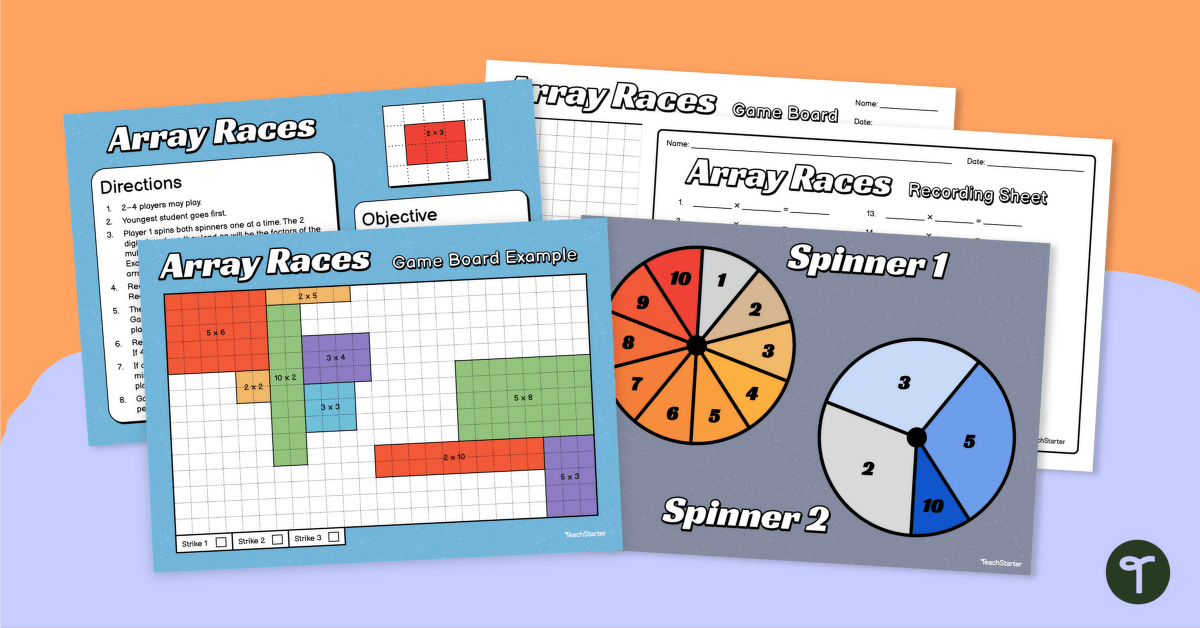

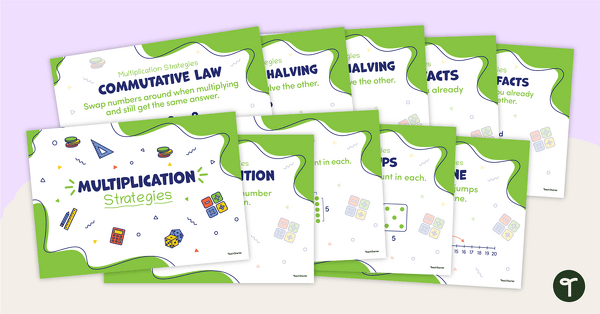
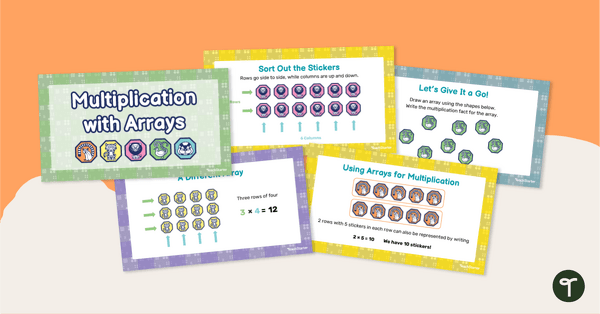
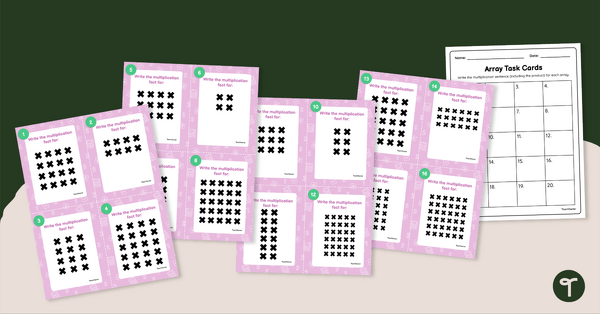
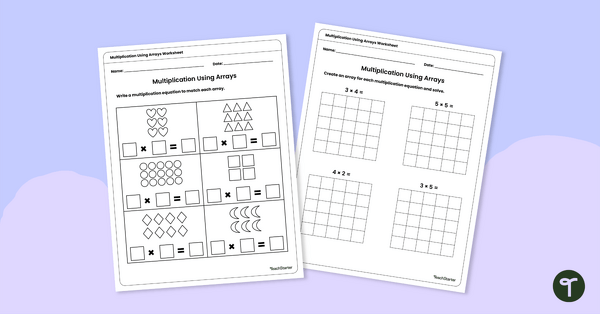
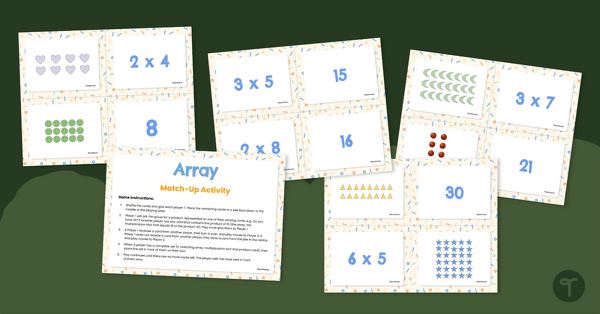
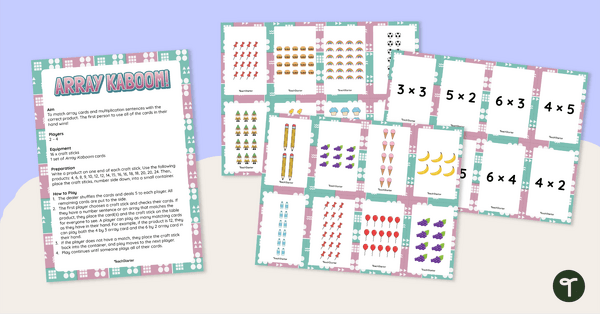
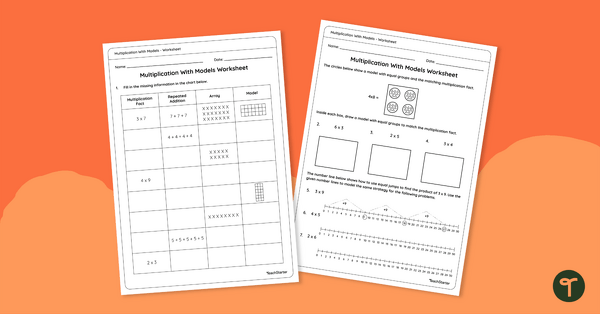
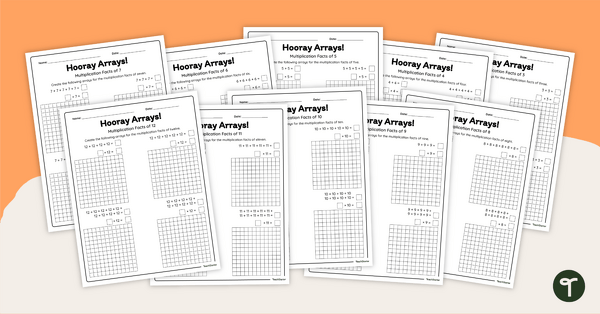
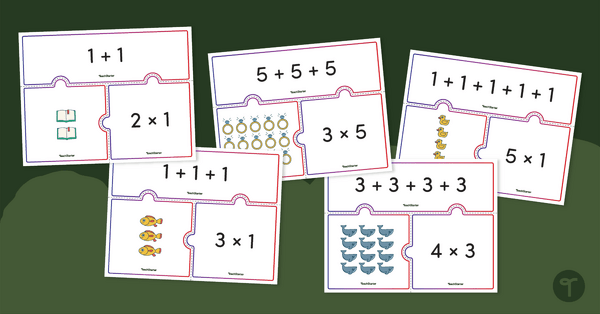
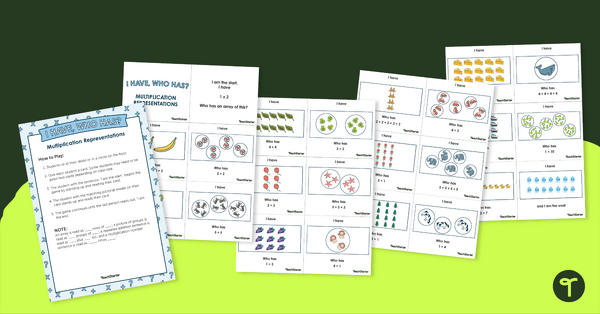
0 Comments
Write a review to help other teachers and parents like yourself. If you'd like to request a change to this resource, or report an error, select the corresponding tab above.